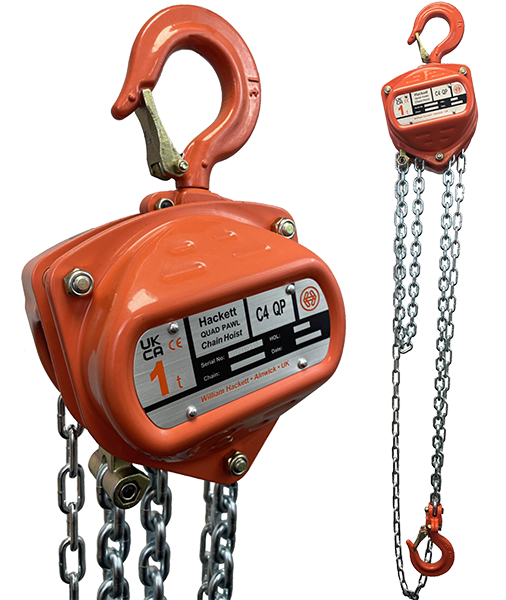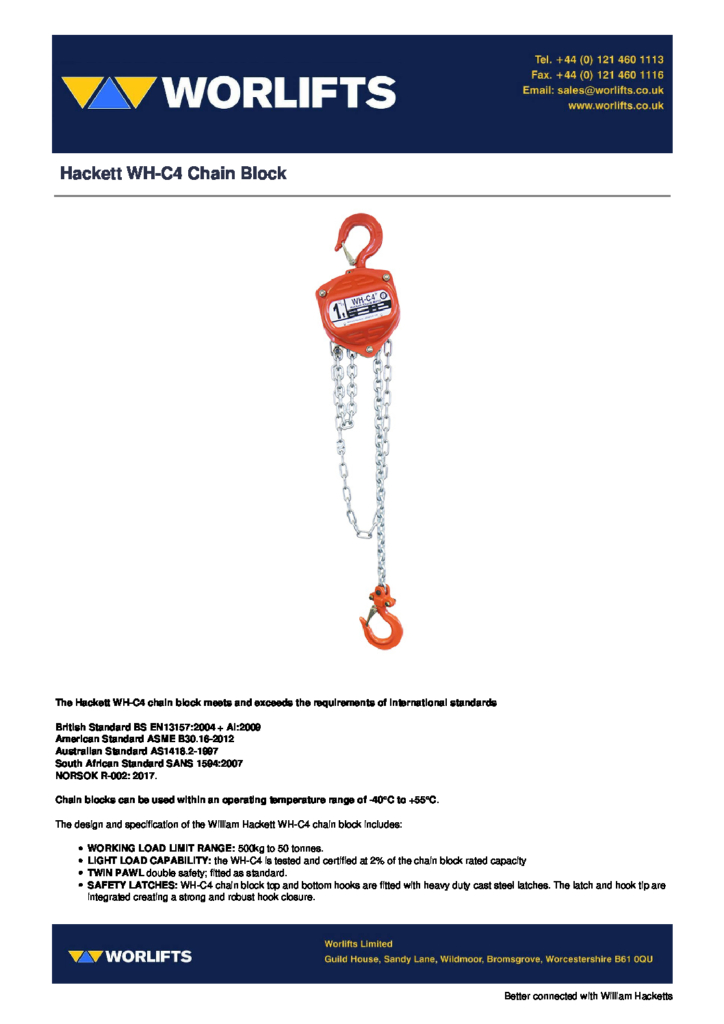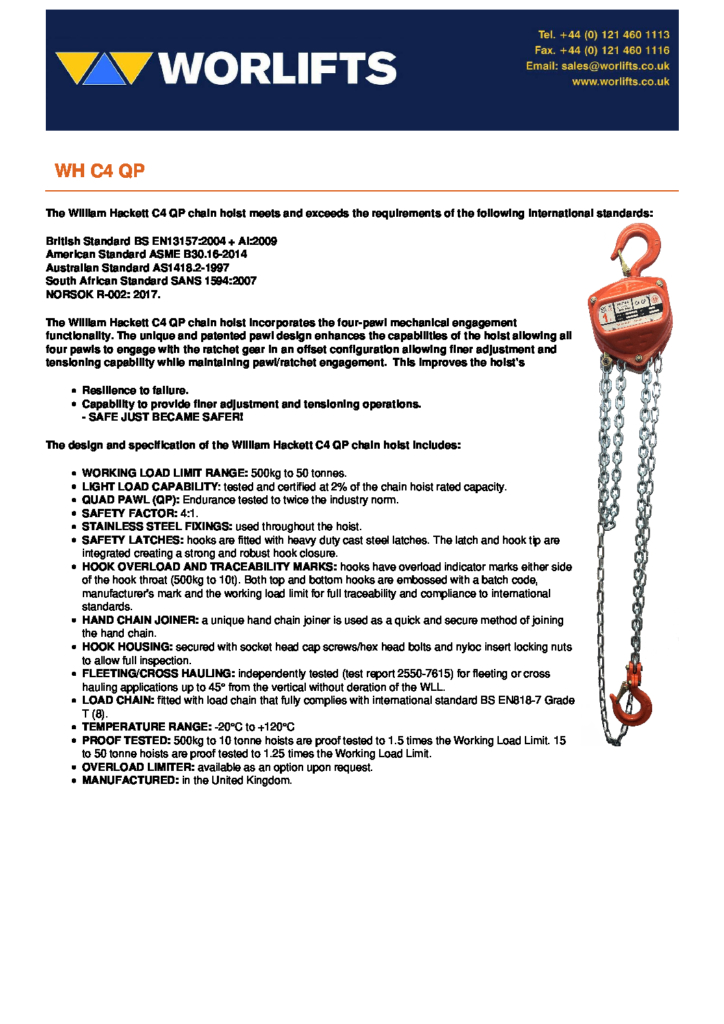Manual Hand Operated Chain Blocks
Home > Manual Hand Operated Chain Blocks
Overview
A Manual Hand Chain Block is predominantly favoured for lifting applications where there are either long intervals between use, frequent changes of use or even just tasks in a remote location. This makes a chain block a very versatile piece of lifting equipment and the option of various heights of lift (HOL) and top hook connection points allows nearly endless configurations for all industry sectors.

Manual Hand Chain Blocks FAQ's
A chain block is a manual piece of workshop equipment used to lift heavy loads. It can also be used to safely lower heavy loads that could be damaged or cause damage if their descent was uncontrolled. Chain blocks make use of wheels which the chain then wraps around, and when the chain is pulled the item attached starts to lift and can then be manoeuvred.
The majority of chain blocks are electrical and automated, but manual hand chain blocks can also be bought as an alternative option. The chain block itself comes packaged with a chain for lifting, a pulling chain, and a hook to grab the block once loaded. Use the hook to attach to the load, and then use the pulling chain to increase tautness in the lift. This wraps around the wheels in the block and slowly pulls the weight upwards, according to your desired needs and placement.
Chain blocks are used in a variety of sectors. Thanks to their efficiency (they can be operated by just one person), they can be used in place of forklifts or stackers or other hydraulic based equipment. Many commercial environments that require precise work use them, such as chemical labs and small factories, and you’ll often see them used within mechanic garages as well. The user can buy a chain block in whatever weight capacity they need, with most blocks starting at 500kg in capacity. Some models can even lift up to 50 tons in total.
Chain blocks are used by hand, whereas lever blocks are used by rotating a lever - while both can be done by hand, the manual element is too important to ignore. Similarly, chain blocks are mostly used to lift and lower heavy items, and lever blocks allow the user a lot more control. Items can be moved in multiple directions according to your warehouse needs. However, lever blocks have a much lower lifting capacity compared to chain blocks, who are often capable of lifting up to 50 tons multiple times across the average workday.
If you want to buy a chain block for your business, you’ll have to take many things into account. First, make sure you’re working with an established brand/manufacturer to ensure the safety quality of the chain block itself. You’ll also need to prioritise the amount of weight you have to lift on a regular basis, and how many people you have working on the floor at the same time. If you work in more wet or unsafe conditions, you’ll also have to look into the material the chain block is made of, to ensure you’re investing in durable equipment.
There are quite a few advantages to using manual hand chain blocks in the workplace. The most obvious benefit is the increase in efficiency a chain block will allow you. Only one or two people need to pull on the chain to lift or lower items, and this can be done multiple times easily across the workday. Chain blocks are easy to use, and don’t need to be mounted before they can be operated. Another benefit is the security measures involved in the design process. The chains are incredibly strong, and are unlikely to break down over time.
While chain blocks come fitted with quite a few advantages, there are also select disadvantages to their use. The worst of these is the relative slow operation of the chain block; a manual operation will always be slightly slower than an electric one. At the same time, while they do not need to be mounted to be used, there are quite a few regulations that come with fitting them into your workplace. Depending on where you need to use the chain block, the requirements for safe use will be different.
Using a hand chain block should be done with caution. Before use, you should always check to see if the chain itself is in good condition and keep hands, fingers, and feet clear of the loading area. Once you’ve loaded something into the block, you’ll also need to double check the setup. The chain itself should not be twisted or snagged in any place, and it should feel smooth in your hands when you make preliminary movements. And once you’ve started to lift, be sure to stop to check the load and if it’s safely moving as it’s gaining height. Always wear the correct PPE when working with chain blocks.

